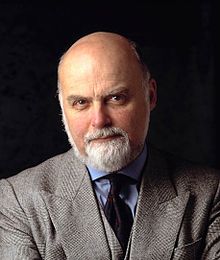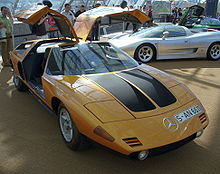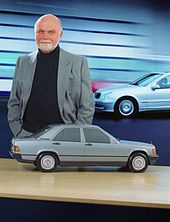
CarlFriedrich Benz was a German engine designer and automotive engineer. His Benz Patent Motorcar from 1885 is considered the first practical modern automobile and first car put into series production. He received a patent for the motorcar in 1886, the same year he first publicly drove the Benz Patent-Motorwagen.
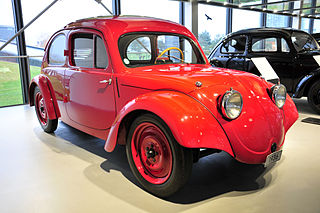
Erwin Komenda was an Austrian automobile designer and Porsche employee, and a lead contributor to the design of the bodies for the VW Beetle and various Porsche sports cars.

The Mercedes-Benz S-Class, formerly known as Sonderklasse, is a series of full-sized luxury sedans, limousines and armored sedans produced by the German automaker Mercedes-Benz. The S-Class is the designation for top-of-the-line Mercedes-Benz models and was officially introduced in 1972 with the W116, and has remained in use ever since. The S-Class is one of the flagship vehicles for Mercedes-Benz.

Maybach is a German luxury car brand owned by and a part of Mercedes-Benz AG. The original company was founded in 1909 by Wilhelm Maybach and his son Karl Maybach, originally as a subsidiary of Luftschiffbau Zeppelin GmbH, and it was known as Luftfahrzeug-Motorenbau GmbH until 1999.

The Mercedes-Benz CL-Class is a line of grand tourers which was produced by German automaker Mercedes-Benz, produced from 1992 to 2014. The name CL stands for the German Coupé Luxusklasse (Coupé-Luxury). It is considered by Mercedes as their premier model.

The Mercedes-Benz SLK-Class is a compact executive roadster, produced by Mercedes-Benz. It was released in 1996 and was built at the Mercedes plant in Bremen, Germany, until the end of production in 2020.

The Mercedes-Benz CLK-Class is a former series of mid-size or entry-level luxury coupés and convertibles produced by Mercedes-Benz between 1996 and 2010. Although its design and styling was derived from the E-Class, the mechanical underpinnings were based on the smaller C-Class, and was positioned between the Mercedes-Benz SLK-Class and CL-Class. The name CLK is either derived from the German words "Coupé", "Luxus" (luxury) and "Kurz" (short) or "Coupé", "Leicht" (light) and "Kurz" (short), as the clear definition was never published. It primarily competes with the two-door BMW 3 and 6 Series, as well as the Audi A4 Cabriolet and Audi A5 Coupe/Cabriolet, as well as the Maserati Coupe and its convertible variant.

The Mercedes-Benz W126 is a series of passenger cars made by Daimler-Benz AG. It was marketed as the second generation of the Mercedes-Benz S-Class, and manufactured in sedan/saloon (1979–1991) as well as coupé (1981–1990) models, succeeding the company's W116 range. Mercedes-Benz introduced the 2-door C126 coupé model, marketed as the SEC, in September 1981. This generation was the first S-Class to have separate chassis codes for standard and long wheelbases and for coupé (C126).

The second generation Mercedes-Benz SLK, internally designated model R171, is a two-passenger, front-engine, rear-drive, retractable hardtop roadster, unveiled at the 74th Geneva International Motor Show—and manufactured and marketed for model years 2004–2010. Currently in its third generation and manufactured at Mercedes' Bremen plant, the SLK nameplate designates Sportlich (sporty), Leicht (light), and Kurz (compact).

The Mercedes-Benz W140 is a series of flagship vehicles manufactured by Mercedes-Benz from 1991 to 1998 in sedan/saloon and coupe body styles and two wheelbase lengths. Mercedes-Benz unveiled the W140 S-Class at Geneva International Motor Show in March 1991 with sales launch in April 1991 and North American launch on 6 August 1991.

Automotive design is the process of developing the appearance of motor vehicles, including automobiles, motorcycles, trucks, buses, coaches, and vans.

Béla Barényi was an ethnic Hungarian engineer from Austria-Hungary, who was a prolific inventor, sometimes even compared to Thomas Edison. Barényi made numerous crash protection inventions, and is therefore regarded as the father of passive safety in automotive design.

Beijing Benz is an automotive manufacturing company headquartered in Beijing, China, and a joint venture between BAIC Motor and Mercedes-Benz Group.

Paul Bracq is an automotive designer noted for his work at Mercedes-Benz, BMW, Citroën, and Peugeot.

Friedrich Geiger was a German automobile designer whose most notable cars, the pre-World War II Mercedes-Benz 540K and post-war Mercedes-Benz 300SL, are among the most highly regarded in automotive history.
Mercedes-Benz, commonly referred to as Mercedes and sometimes as Benz, is a German luxury and commercial vehicle automotive brand established in 1926. Mercedes-Benz AG is headquartered in Stuttgart, Baden-Württemberg, Germany. Mercedes-Benz AG produces consumer luxury vehicles and light commercial vehicles badged as Mercedes-Benz. From November 2019 onwards, Mercedes-Benz-badged heavy commercial vehicles are managed by Daimler Truck, a former part of the Mercedes-Benz Group turned into an independent company in late 2021. In 2018, Mercedes-Benz was the largest brand of premium vehicles in the world, having sold 2.31 million passenger cars.

The third generation of Mercedes-Benz SLK-Class (SLC-Class) was launched in Stuttgart in January 2011, with a subsequent public launch at the 2011 Geneva Motor Show, with international sales starting spring 2011. It is the successor of R171 series of roadsters which was originally launched in 2004. The SLC was discontinued after the 2020 model year.
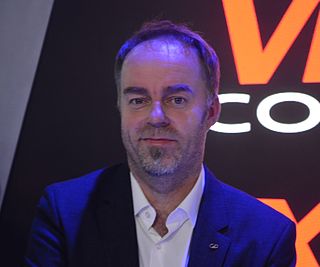
Stephen Mattin is a British automobile designer. He is known as the chief designer of AvtoVAZ Lada, as well as the designer of Mercedes ML-Class and GL-Class E vehicles.

Michael Mauer is a German automobile designer. He is the Chief Designer at Porsche. He has previously worked for Mercedes-Benz and Saab.
